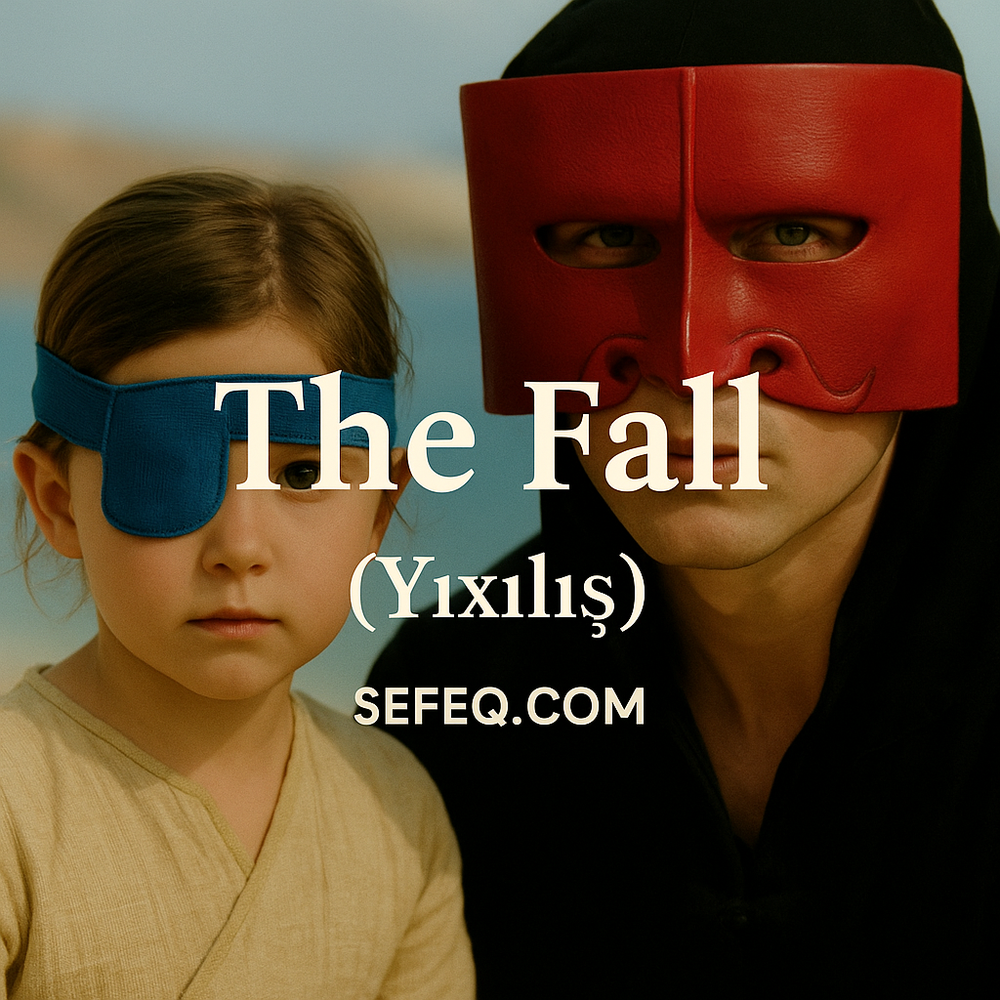Introduction
This article presents a complete visual and emotional analysis of the film “The Fall.” It is written in such a way that even a reader who hasn’t seen the movie can feel as if they have experienced it. Along with an SEO-optimized title, description, and content for Google search engines, the article includes thought-provoking questions to engage the reader.
“The Fall” is a visually and emotionally rich film directed by Tarsem Singh in 2006. It demonstrates the power of storytelling on both metaphorical and real levels. This article aims to allow even someone unfamiliar with the film to sense its spirit, recognize its characters, follow its events, and be deeply moved by its ending.
Time and Setting
The story takes place in the 1920s at a hospital in Los Angeles. A young man named Roy Walker, a stuntman working in films, is hospitalized after a serious accident during filming. In the same hospital, a 5-6-year-old Romanian girl named Alexandria, who has broken her arm, is also being treated. Their acquaintance marks the beginning of a strange and deeply touching story.
Roy and Alexandria – The Beginning of Trust
Roy is in deep depression. He has been abandoned by his lover and deliberately performed a dangerous stunt on set in an attempt to end his life. He has lost faith in everything. Alexandria, on the other hand, is innocent, pure-hearted, and full of imagination. To her, Roy becomes a magical figure who tells fascinating stories.
Roy begins telling her a story in order to build a relationship with her—but his hidden goal is to get closer and use her to obtain morphine to carry out his suicide plan.
The Fantasy Story – Heroes and Adventure
In Roy’s story, there are five main heroes:
-
A Bandit
-
An Indian warrior
-
An Italian explosives expert named Luigi
-
An African servant named Otta Benga
-
The naturalist Charles Darwin and his monkey Wallace
What unites them: their common desire for revenge against the evil ruler Odious.
The film’s visual brilliance starts here. Roy’s story materializes in Alexandria’s imagination. The heroes take on the faces of people she knows in real life. For example, Odious resembles the doctor who refuses to give Roy medicine. Luigi is based on an Italian worker in the hospital, and so on.
Blurring of Reality and Fantasy
As Roy’s mental state deteriorates, so does the direction of the story. He starts killing off the heroes one by one, as he himself loses hope. But Alexandria is emotionally invested in the story—it's vital to her that the heroes survive. In one scene, she falls and injures her head, pleading with Roy to continue the tale.
At this point, Roy steers the story into darkness and despair. However, Alexandria’s reaction—her tears—awakens something human in Roy.
Climax and Emotional Explosion
Eventually, Roy identifies with the story’s main hero. He wants the hero to die. But Alexandria firmly objects. She cries out:
“You can’t kill him, because he is you!”
This dialogue marks one of the film’s most powerful psychological moments.
Finally, Roy changes the narrative. The hero survives, evil is defeated. A spark of hope is reborn inside Roy. This is his emotional transformation—the moment a fallen man decides to rise again.
Ending and Symbolism
In the end, Roy leaves the hospital. Alexandria will never forget him. But the film doesn’t end there—we see scenes from the films Roy previously worked on. As Alexandria watches the dangerous stunts performed by stuntmen, she begins to better understand what Roy went through.
Besides visual beauty and emotional depth, the film conveys powerful symbolic messages:
-
Falling is part of life, rising is a choice.
-
Imagination can save a person.
-
Childlike purity can bring light into the dark world of adults.
Conclusion
“The Fall” is not an ordinary film. It is like poetry in cinematic form, demonstrating how powerful a story can be and how it can influence human psychology. Even those who haven’t seen the film will feel its spirit by reading this article and find a piece of themselves in Roy and Alexandria’s journey.
A Question for the Reader:
Do you think Roy saved himself by changing the story, or did he merely continue to live on in Alexandria’s imagination?
We’d love to hear your thoughts—share your opinion below.
Thank you for reading.
If you’d like, I can continue this series with other films.

